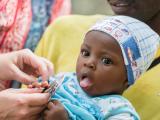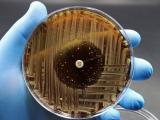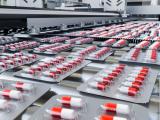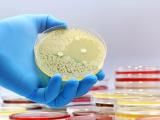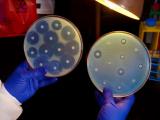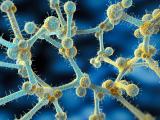A new study by an international team of scientists suggests that analyzing the DNA of urban sewage in different countries may tell the full story of global antimicrobial resistance (AMR) levels and provide a cheaper and easier method of conducting global AMR surveillance.
In a paper published in Nature Communications, the scientists report that metagenomic analysis of untreated sewage from 60 countries revealed a clear geographic distinction in AMR levels, with countries in Asia, Africa, and South America having more AMR genes, and a larger variety of them, than countries in Europe, North America, and Oceania. Their analysis also found that high AMR gene abundance was related to poor sanitation and health in many of those countries.
"Our findings suggest that global AMR gene diversity and abundance vary by region, and that improving sanitation and health could potentially limit the global burden of AMR," the authors of the study write.
New approach to AMR surveillance
The team, which was led by researchers from the Technical University of Denmark (DTU), analyzed domestic sewage samples from 79 sites in 60 countries using whole-genome sequencing (WGS) technology. The sewage was collected by collaborators in the Global Sewage Surveillance Project, an effort to analyze domestic sewage for AMR genes, disease-causing pathogens, and other potential hazards.
One of the advantages of this metagenomics approach is that it allowed the team to quantify thousands of AMR genes in urban sewage simultaneously. The researchers believe analyzing urban sewage could provide a broader picture of the global burden of AMR than hospital-based AMR surveillance, which focuses on bacterial pathogens from sick patients and doesn't capture all the resistance genes that might be present in the bacterial flora of predominantly healthy individuals. Analyzing sewage also doesn't require informed consent, as would obtaining and analyzing fecal samples from healthy people.
"It's faster and cheaper, with less problems with ethical issues," lead study author Frank Aarestrup, PhD, of DTU's National Food Institute, told CIDRAP News.
Overall, a total 1,625 different AMR genes belonging to 408 gene groups were identified in the samples. Comparison of the metagenomic data from the samples showed that total AMR gene abundance varied across countries and continents, with Brazil having the highest abundance of AMR genes of all countries. Brazil, India, and Vietnam had the highest diversity of AMR genes.
AMR genes encoding resistance to macrolides, tetracyclines, aminoglycosides, beta-lactams, and sulfonamides were the most abundant. Macrolide resistance genes made up a high proportion of the AMR genes in North America and Europe, while genes that confer resistance to sulfonamides and phenicols were more likely to be found in sewage from Asian and African sites. The 15 AMR genes that accounted for more than half the total AMR abundance were especially prominent on North America, Europe, and Oceania (specifically in Australia and New Zealand).
When the researchers analyzed the AMR abundance on both the gene and antimicrobial class levels, they found that the sewage samples from North America, Europe, and Oceania had a lower overall abundance of AMR genes, and fewer types of AMR genes, compared with the samples from Africa, Asia, and South America, which had a higher abundance and higher diversity of genes.
"The world can be divided into two regions," Aarestrup said, with high-income countries in one region and low-income nations in another.
Poor sanitation, health linked to AMR levels
What the investigators also found was that antimicrobial use doesn't fully explain why countries in Asia, Africa, and South America have a higher abundance and diversity of AMR genes.
When they analyzed the relationship between overall antimicrobial use and the amount of AMR genes in sewage samples, they found that the abundance of AMR genes resistant to a certain class of antibiotics rose with increased use of that antimicrobial class. But total antimicrobial use didn't affect total AMR gene abundance. The findings were similar when they looked at antimicrobial residue levels.
Both of those analyses, however, indicated that countries with a higher rank on the United Nations (UN) Human Development Index—which measures the average achievement of a country in terms of life expectancy, education, and per capita income—had fewer AMR genes. That led them to suspect that there may be a relationship with socioeconomic, health, and environmental factors.
To study the potential relationship between those factors and AMR levels, the researchers used data sets from the World Bank on health, nutrition, population, and development for 259 countries. That assessment revealed a set of variables related to general health and sanitation—including life expectancy, childhood mortality, and levels of investment in water and sanitation—that were associated with AMR levels.
The researchers then used those variables to predict the occurrence of AMR in 259 countries. According to those predictions, the Netherlands, New Zealand, and Sweden have the lowest levels of resistance, while Tanzania, Vietnam, and Nigeria have the highest.
Although Aarestrup and his colleague can't fully explain why total antimicrobial use didn't appear to affect overall AMR gene abundance in their analysis, his theory is that, while antimicrobial consumption is what ultimately drives the selection of resistant bacteria, the impact of that consumption may be influenced by where it occurs. For example, when a patient takes an antibiotic in a country like Denmark, the antibiotic will select for resistant bacteria and resistance genes in that individual, but the degree of transmission to others is limited by good infection control and prevention practices and good sanitation. In countries lacking those advantages, however, resistance can spread farther.
"In high-prevalence countries, due to the lesser sanitation, the transmission is higher, and thus the local/national impact," he said.
Aarestrup and his colleagues say these findings suggest that improving sanitation and health as part of the UN's Sustainable Development Goals could be an effective way to help limit the global impact of AMR.
While this study focused on AMR genes, future research will examine the genomic data from the sewage samples for other disease-causing microorganisms.
"In sewage, we could potentially look for everything," Aarestrup said. "Antimicrobial resistance genes only constitute 0.1% of all the genes present."
See also:
Mar 8 Nat Commun study


